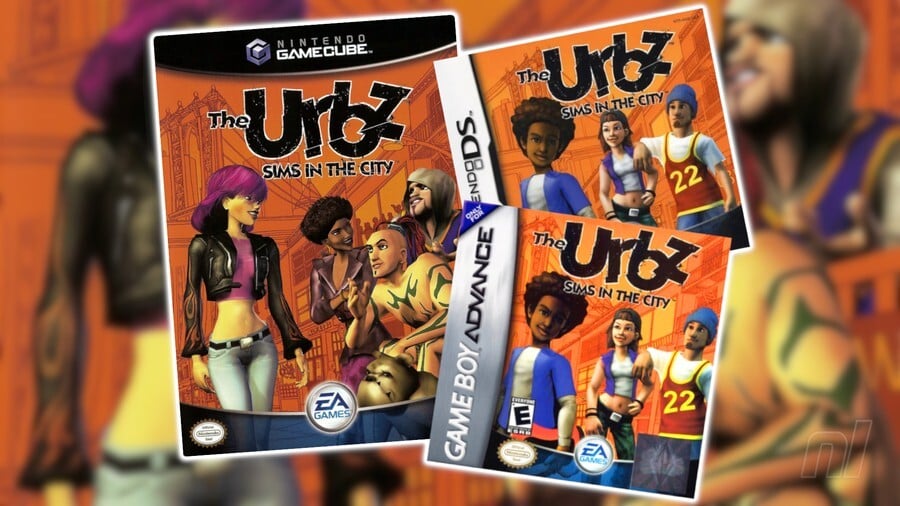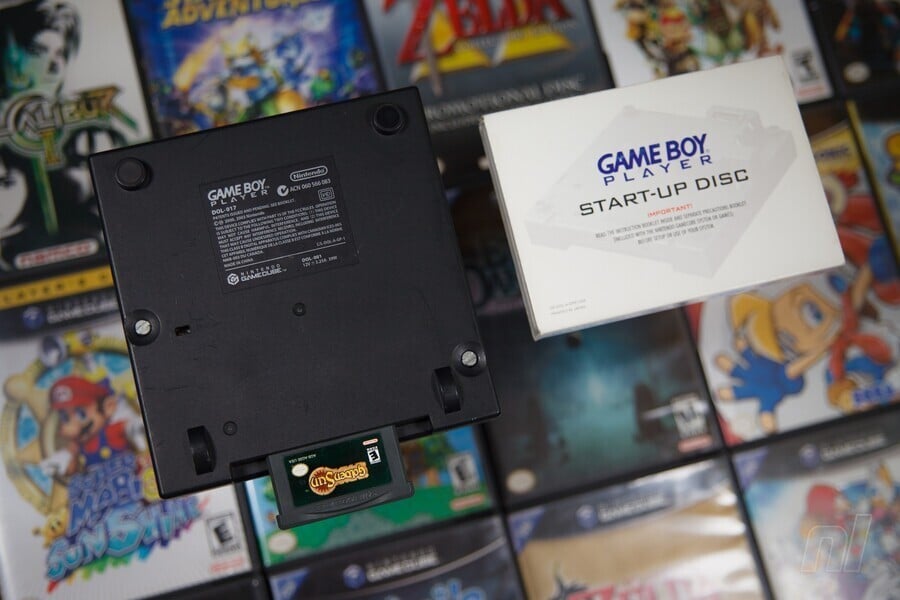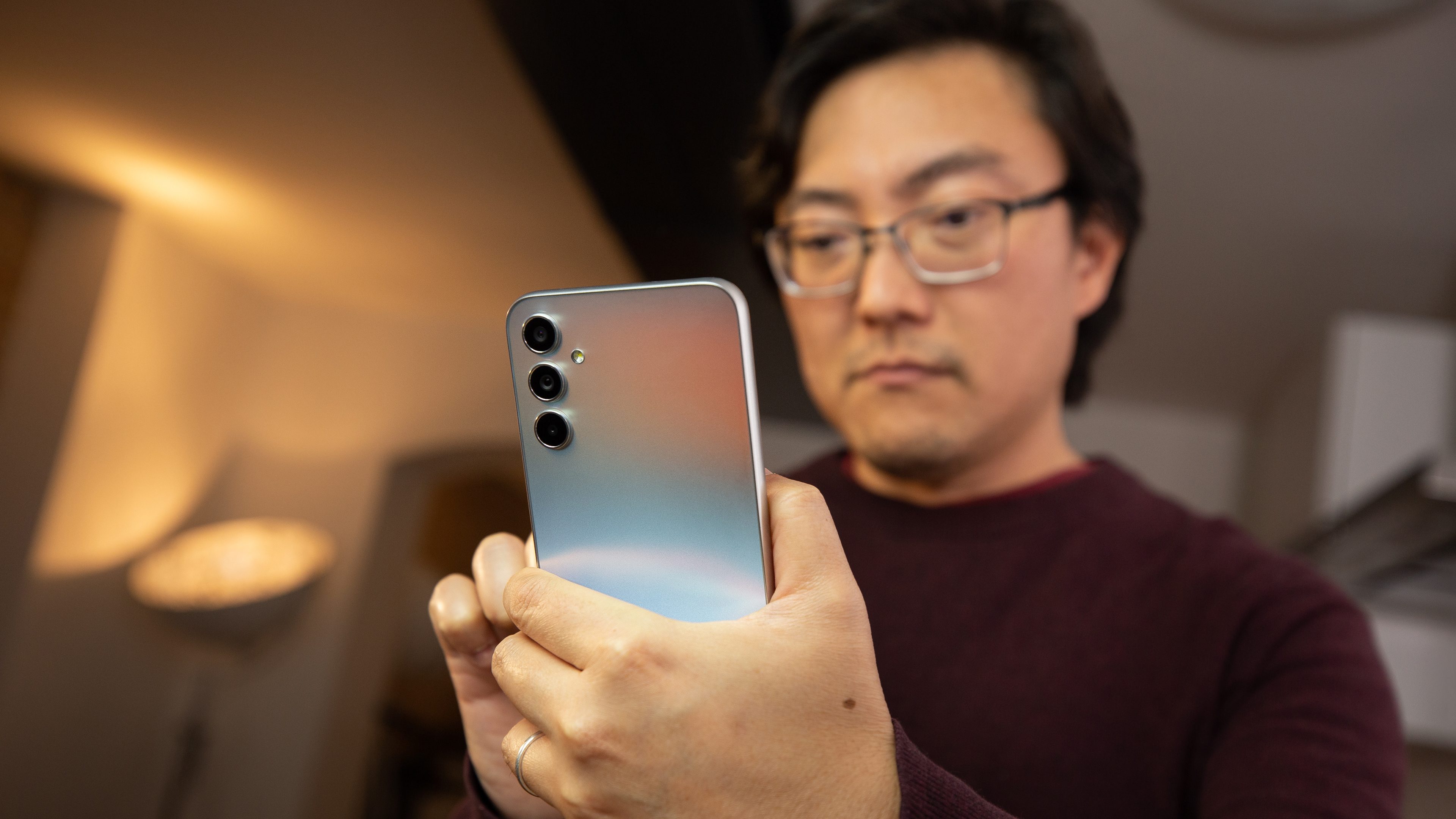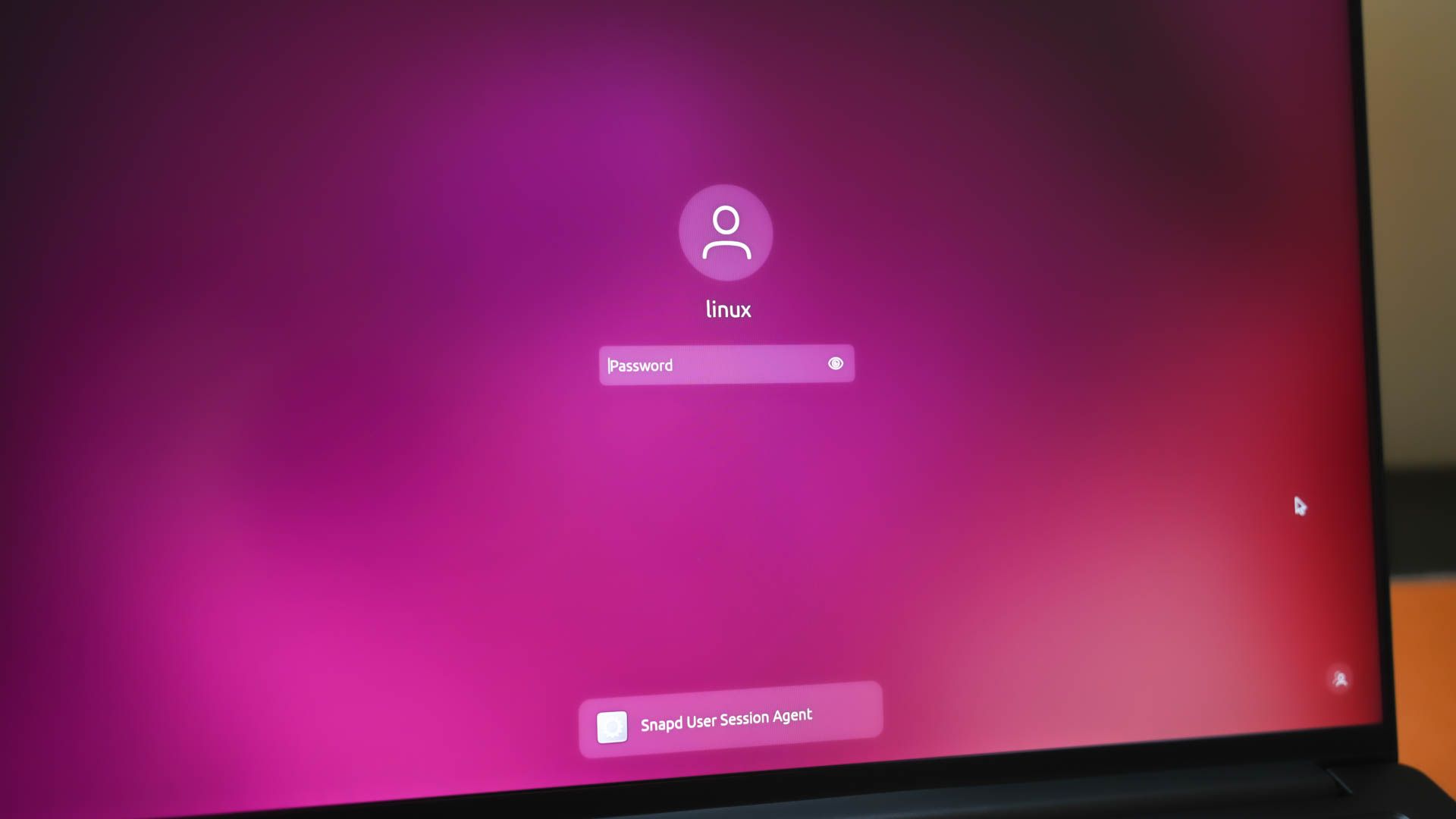

When I was working on my MFA in Game Design, I referenced Urbz: Sims in the City in a meeting with my thesis advisor, and he asked if I had played the console or the handheld version. I was confident that I’d played the console version growing up. I could recall the memory quite clearly—sitting against a study pillow on my childhood bed with the controller’s too-short cord pulled taut against the GameCube across the room, furiously speeding through the game in an attempt to finish every goal before Hollywood Video’s three-day rental period elapsed.
It’s hard to explain the cognitive dissonance I felt when my advisor started talking about in-game material that was completely unknown to me, that was certainly not what I remembered playing but had an eerie sameness to it, like the game I knew but in an alternate reality.
After that meeting, I got my hands on a copy of Urbz for my GameCube and booted it up. I was interested in the minigames I loved playing as a kid and wanted to take some notes for my thesis. The game loaded to a cinematic I’d never seen of a sim with big purple hair walking around a city in low-cut jeans trying to impress club bouncers with aerial dance moves. I launched the character creator and it was obvious that this was a different game than I remembered. The graphics alone were in a completely different ballpark, let alone the comparatively rich selection of hair and clothing options.
When I tracked down a copy of the handheld version of Urbz, everything came into focus. It was the game that I remembered— blocky graphics, ridiculous minigames and all. It turned out that I had played Urbz on my GameCube as a kid but only by way of the Game Boy Player, a genius contraption that clipped to the bottom on the GameCube and enabled play of Game Boy and Game Boy Advance games right on my TV screen.
Double take
Urbz was far from the only title in the early 2000s to have distinct versions for handheld versus home consoles. 2001 was a big year for Nintendo with the release of both the Game Boy Advance (GBA) and the GameCube. These cousin consoles shared a library of titles that, despite sharing a name, were often completely different experiences depending on what console you played them on. Tony Hawk had multiple major releases during the PS2/Xbox/GameCube generation, including Pro Skater 3 and 4, the first two Underground games, and American Wasteland/Sk8land. Two of my all-time favorite games on the GameCube, SSX Tricky and Super Monkey Ball, had GBA ports that met with varying approval in comparison to their home console counterparts.
Games with handheld ports like SSX Tricky made the GBA experience feel like a consolation prize in lieu of the real deal on the GameCube
Taking a game from the console to the less-powerful handheld could be compared to a translation of sorts, like bringing a book to the screen or envisioning a game as a television series, either keeping as faithfully to the original as possible or making adjustments to suit the new format. The GameCube’s Super Monkey Ball received a port to the GBA under the name Super Monkey Ball Jr. about a year after its console launch. Super Monkey Ball Jr. includes levels that are direct ports from the console version and some that were made in particular for the handheld version. The mechanics are largely the same between the two games, but the GBA of course isn’t blessed with an analog stick like that on a GameCube controller which made for much more difficult navigation on the handheld version.
The Game Boy Advance outsold the GameCube by an incredible amount — 81.51 million units versus 21.74 million — a dichotomy in sales trends for Nintendo’s home and handheld consoles that continued into the Nintendo DS and Wii era, albeit with Wii closing the gap. Yet, many games that were made available for both the GameCube and GBA were clearly designed with the home console in mind. That’s why we have instances like SSX Tricky, where the handheld version is a severely watered-down, nearly impossible-to-play facsimile that stubbornly attempts to recreate the console levels and mechanics with far worse graphics and frame rate. Games with handheld ports like SSX Tricky made the GBA experience feel like a consolation prize in lieu of the real deal on the GameCube.
The games that came out of this era of development say a lot about the capabilities of different platforms at the time, but also speak to who the intended audiences were for console versus handheld gaming.
Take Urbz, for example. The handheld was rated ‘E for Everyone’ and had more of an action-adventure feel to it in terms of genre. The console version of Urbz was rated ‘T for Teen’ and frankly pushed at those boundaries with social interactions like ‘Strip Tease,’ ‘Grab Booty,’ and ‘Suck Face.’
The handheld ports for both SSX Tricky and Super Monkey Ball can be said to maintain the spirit of the console versions they’re derived from, showcasing the upsides and potential detriments of such an approach. Urbz falls into a different category, almost more adaptation than translation. At this point, I’ve logged dozens of hours in both versions of Urbz, and they are two games that feel like they’re drawing from a shared idea and source material instead of one game based on the other.
The same but (very) different
Their shared elements, like minigames, reputation, social groups, and goal-oriented plot lines make them seem like similar games on paper, but in reality they couldn’t be more different.
You start out earning money by squeegeeing windows while dodging bird poop.
In the handheld version of Urbz, I was tasked with taking down harmful capitalistic forces as represented by the comically evil character Daddy Bigbucks. Goals are a big part of the home console’s Urbz as well, but they’re more formulaic. Everything is geared towards getting the right clothes, impressing the right people, and progressing into more and more neighborhoods as your reputation increases.
The minigames in both versions center around making money. Whether you’re earning cash as skateboarder, model, or piercing manufacturer in the home console version, the same mechanic is always present: hitting a series of four buttons in the order shown to boost your performance as quickly as possible.
The handheld version’s minigames are more distinct and are what drew me back to Urbz in the first place. You start out earning money by squeegeeing windows while dodging bird poop. My favorite was always being a comedian where I’d tell jokes to fill up a laugh meter, occasionally promenading to either side of the stage to avoid tomatoes from the crowd.
Urbz on GameCube gives you everything you need to engage in social roleplay, from piercings and tattoos to complete your look to all the bizarre social interactions that help you climb the reputation ladder. Handheld Urbz gives you community and a grand purpose where the social elements are tied into a fairly linear plot. They’re two completely different answers to the same prompt.
Worlds collide

The Game Boy Player helped to bridge the gap for home console owners who didn’t have a GBA and wanted to be able to play major, handheld-only titles (like the main Pokémon series). I don’t even have my GBA anymore; I just play all my Game Boy games on my GameCube.
But the prevalence of GameCube games with handheld ports created the possibility for strange experiences like the one that I had with Urbz, especially if we think about porting as a type of translation. Playing a handheld game that is a port of a GameCube game on the Game Boy Player is similar to reading a book that has been translated into one language and then separately translated back into its original language. It’s a bizarre game of telephone that dabbles in the uncanny.
In 2023, there isn’t such a distinct separation as there used to be between handheld and home console gaming. I can take a Nintendo Switch game from my hands to the television without ever having to change out a cartridge. The challenge for developers tasked with making something that worked on multiple systems with entirely different processing capabilities and player experience expectations resulted in some truly iconic games. Today’s developers have their own challenges that continue to lead to gains in the gaming world, but I wonder if we’ll ever see the likes of 2001 again: translations that confuse as much as they delight, doppelgangers that get further from the original the more they materialize, the reflection in the mirror winking just as you turn away.

When I was working on my MFA in Game Design, I referenced Urbz: Sims in the City in a meeting with my thesis advisor, and he asked if I had played the console or the handheld version. I was confident that I’d played the console version growing up. I could recall the memory quite clearly—sitting against a study pillow on my childhood bed with the controller’s too-short cord pulled taut against the GameCube across the room, furiously speeding through the game in an attempt to finish every goal before Hollywood Video’s three-day rental period elapsed.
It’s hard to explain the cognitive dissonance I felt when my advisor started talking about in-game material that was completely unknown to me, that was certainly not what I remembered playing but had an eerie sameness to it, like the game I knew but in an alternate reality.
After that meeting, I got my hands on a copy of Urbz for my GameCube and booted it up. I was interested in the minigames I loved playing as a kid and wanted to take some notes for my thesis. The game loaded to a cinematic I’d never seen of a sim with big purple hair walking around a city in low-cut jeans trying to impress club bouncers with aerial dance moves. I launched the character creator and it was obvious that this was a different game than I remembered. The graphics alone were in a completely different ballpark, let alone the comparatively rich selection of hair and clothing options.
When I tracked down a copy of the handheld version of Urbz, everything came into focus. It was the game that I remembered— blocky graphics, ridiculous minigames and all. It turned out that I had played Urbz on my GameCube as a kid but only by way of the Game Boy Player, a genius contraption that clipped to the bottom on the GameCube and enabled play of Game Boy and Game Boy Advance games right on my TV screen.
Double take
Urbz was far from the only title in the early 2000s to have distinct versions for handheld versus home consoles. 2001 was a big year for Nintendo with the release of both the Game Boy Advance (GBA) and the GameCube. These cousin consoles shared a library of titles that, despite sharing a name, were often completely different experiences depending on what console you played them on. Tony Hawk had multiple major releases during the PS2/Xbox/GameCube generation, including Pro Skater 3 and 4, the first two Underground games, and American Wasteland/Sk8land. Two of my all-time favorite games on the GameCube, SSX Tricky and Super Monkey Ball, had GBA ports that met with varying approval in comparison to their home console counterparts.
Games with handheld ports like SSX Tricky made the GBA experience feel like a consolation prize in lieu of the real deal on the GameCube
Taking a game from the console to the less-powerful handheld could be compared to a translation of sorts, like bringing a book to the screen or envisioning a game as a television series, either keeping as faithfully to the original as possible or making adjustments to suit the new format. The GameCube’s Super Monkey Ball received a port to the GBA under the name Super Monkey Ball Jr. about a year after its console launch. Super Monkey Ball Jr. includes levels that are direct ports from the console version and some that were made in particular for the handheld version. The mechanics are largely the same between the two games, but the GBA of course isn’t blessed with an analog stick like that on a GameCube controller which made for much more difficult navigation on the handheld version.
The Game Boy Advance outsold the GameCube by an incredible amount — 81.51 million units versus 21.74 million — a dichotomy in sales trends for Nintendo’s home and handheld consoles that continued into the Nintendo DS and Wii era, albeit with Wii closing the gap. Yet, many games that were made available for both the GameCube and GBA were clearly designed with the home console in mind. That’s why we have instances like SSX Tricky, where the handheld version is a severely watered-down, nearly impossible-to-play facsimile that stubbornly attempts to recreate the console levels and mechanics with far worse graphics and frame rate. Games with handheld ports like SSX Tricky made the GBA experience feel like a consolation prize in lieu of the real deal on the GameCube.
The games that came out of this era of development say a lot about the capabilities of different platforms at the time, but also speak to who the intended audiences were for console versus handheld gaming.
Take Urbz, for example. The handheld was rated ‘E for Everyone’ and had more of an action-adventure feel to it in terms of genre. The console version of Urbz was rated ‘T for Teen’ and frankly pushed at those boundaries with social interactions like ‘Strip Tease,’ ‘Grab Booty,’ and ‘Suck Face.’
The handheld ports for both SSX Tricky and Super Monkey Ball can be said to maintain the spirit of the console versions they’re derived from, showcasing the upsides and potential detriments of such an approach. Urbz falls into a different category, almost more adaptation than translation. At this point, I’ve logged dozens of hours in both versions of Urbz, and they are two games that feel like they’re drawing from a shared idea and source material instead of one game based on the other.
The same but (very) different
Their shared elements, like minigames, reputation, social groups, and goal-oriented plot lines make them seem like similar games on paper, but in reality they couldn’t be more different.
You start out earning money by squeegeeing windows while dodging bird poop.
In the handheld version of Urbz, I was tasked with taking down harmful capitalistic forces as represented by the comically evil character Daddy Bigbucks. Goals are a big part of the home console’s Urbz as well, but they’re more formulaic. Everything is geared towards getting the right clothes, impressing the right people, and progressing into more and more neighborhoods as your reputation increases.
The minigames in both versions center around making money. Whether you’re earning cash as skateboarder, model, or piercing manufacturer in the home console version, the same mechanic is always present: hitting a series of four buttons in the order shown to boost your performance as quickly as possible.
The handheld version’s minigames are more distinct and are what drew me back to Urbz in the first place. You start out earning money by squeegeeing windows while dodging bird poop. My favorite was always being a comedian where I’d tell jokes to fill up a laugh meter, occasionally promenading to either side of the stage to avoid tomatoes from the crowd.
Urbz on GameCube gives you everything you need to engage in social roleplay, from piercings and tattoos to complete your look to all the bizarre social interactions that help you climb the reputation ladder. Handheld Urbz gives you community and a grand purpose where the social elements are tied into a fairly linear plot. They’re two completely different answers to the same prompt.
Worlds collide

The Game Boy Player helped to bridge the gap for home console owners who didn’t have a GBA and wanted to be able to play major, handheld-only titles (like the main Pokémon series). I don’t even have my GBA anymore; I just play all my Game Boy games on my GameCube.
But the prevalence of GameCube games with handheld ports created the possibility for strange experiences like the one that I had with Urbz, especially if we think about porting as a type of translation. Playing a handheld game that is a port of a GameCube game on the Game Boy Player is similar to reading a book that has been translated into one language and then separately translated back into its original language. It’s a bizarre game of telephone that dabbles in the uncanny.
In 2023, there isn’t such a distinct separation as there used to be between handheld and home console gaming. I can take a Nintendo Switch game from my hands to the television without ever having to change out a cartridge. The challenge for developers tasked with making something that worked on multiple systems with entirely different processing capabilities and player experience expectations resulted in some truly iconic games. Today’s developers have their own challenges that continue to lead to gains in the gaming world, but I wonder if we’ll ever see the likes of 2001 again: translations that confuse as much as they delight, doppelgangers that get further from the original the more they materialize, the reflection in the mirror winking just as you turn away.






